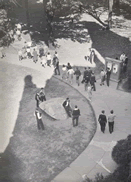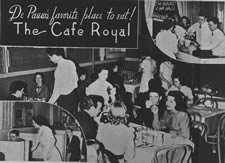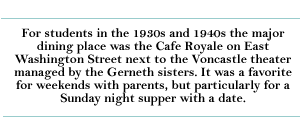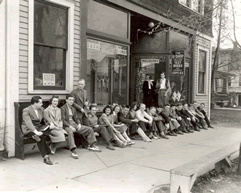
|
In
the aftermath of World War I there began a gradual relaxation of
the older and stricter standards of student behavior that generally
prevailed at DePauw up to the 1920s. University authorities, constrained
by a relatively conservative faculty and board of trustees, to say
nothing of still-potent ties to the Methodist Church, adjusted its
policies and practices in this regard only slowly. Though the absolute
ban on social dancing was lifted in 1926, coeds who wished to attend
campus dances were required as late as 1935 to secure written parental
permission, according to the official "Blue Book" defining
student rules and regulations. Closing hour at all women's living
units was 10 p.m., extended eventually to 11 p.m. on weekends and
occasionally to midnight for special events such as the Junior Prom.
After May Day senior women were permitted to stay out until 11 o'clock
on any night of the week. The
coming of the automobile brought few changes in dating patterns
because the university maintained a strict policy regarding its
use. Except for the first and last days of the academic year, students
were prohibited from having cars on campus without special permission.
Such permission was granted only to those needing transportation
to jobs or student teaching assignments and to commuters from nearby
communities. Later upperclassmen with outstanding academic records
were also allowed the use of cars upon application to the dean of
men. The rule forbidding women to ride in automobiles after seven
o'clock in the evening effectively limited their usefulness in dating.
___________________________________
|
Depauw University e-history | E-mail comments to: archives@depauw.edu





